


 |  |  | 15.3 Environmental constraints and sustainability |
The ultimate objective of MARICULT has been to provide a basis for the evaluation of environmental constraints and the potential for increased sustainable provision of food, raw material and energy from the ocean. The work carried out to contribute to this ultimate objective involved fundamental research related to food web structure and functioning in the marine ecosystem as well as more applied research and testing of concepts for increasing the harvesting potential. Fundamental aspects are important because the critical evaluations of both environmental constraints and possibilities for exploitation must be based on scientific knowledge. New concepts of harvesting and mariculture must be both sustainable and environmentally acceptable. A research strategy of MARICULT has been that the environmental impact of new concepts should be elaborated together with their production potential and not afterwards.
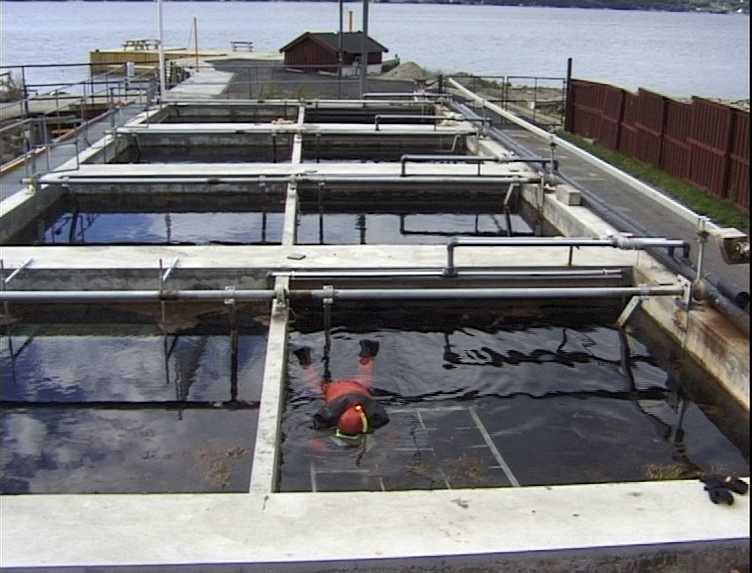
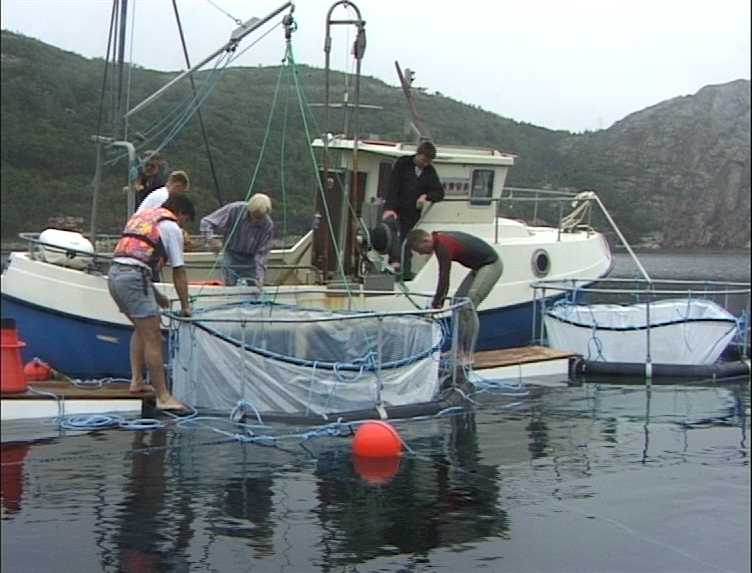
Many projects in MARICULT have examined various aspects of the lower pelagic food web, whereas a few projects have treated fundamental aspects of changing the structure and function of benthic communities (see bibliography in Olsen et al [357]; www.maricult.org ). Studies have been undertaken in cultures, in mesocosms (Figure 3) and in open marine systems. The project work has supported earlier findings on many points, but also provided substantial support for other less known relations. Some examples of results and conclusions generated in the projects are as follows:
It can be summarized that there is a relatively tight coupling between the nutrient supply rate to productive waters and the primary production of phytoplankton, which is not very surprising. This has been repeatedly demonstrated both in closed experimental ecosystems and in open natural coastal ecosystems. The responses of animals feeding on phytoplankton and other food sources were slower, less predictive on the species level, but generally positive as well. Horizontal water transport, vertical mixing processes and interactions with benthic communities make registrations of the slower animal responses difficult during experimental exercises, but this does not mean that there is a lack of response. It is, however, important that the predictability of responses on population level will become gradually less as we move up the food web. There is certainly an empirical positive relationship between nutrient supply and secondary production, including fishery yields, on a regional scale, but the predictability is questionable for single populations feeding high up in the food web.
Research in MARICULT has not involved work that may contribute to enhanced value all through the seafood value chain -- from management, harvesting technology, the wide spectra of downstream refining activities, logistics and market-related issues. Moreover, the priorities of optional methods of sea ranching were tuned down in the course of the Programme because of legal problems, which are now solved in Norway. It will be important to include aspects of and combinations with sea ranching at a later stage.
The above background discussion of food web energetics based on empirical data and the simplest trophic dynamic model showed that:
The low contribution of fisheries and aquaculture to human food compared to the contribution by agriculture can be understood because:
A general strategy to increase the marine harvesting potential is therefore to harvest at a lower trophic level. There are obvious technological constraints in harvesting small particles like phytoplankton and zooplankton. On the other hand, marine macroalgae represent an easily harvestable resource. There are major cultural and social implications of changes in harvesting strategies and challenges in resource management. The strategy of harvesting at low trophic levels is widely accepted in agriculture.
The general strategies to increase the potential of mariculture are to increase the culture efforts of herbivore/omnivore animals (algal eating/omnivore, e.g. mussels) and to use food resources for traditional carnivore aquaculture that are harvested at primary producer or herbivore level, in accordance with the above strategy.
These general strategies formed the basis of the further identification and evaluation of concepts to obtain higher marine harvesting potential, in accordance with the ultimate objective of MARICULT. There are available options for further elaboration. One major challenge is to harmonize environmental and resource related perspectives of nutrients, which are both resources and potential environmental problems. Concepts that are proposed by MARICULT consider the above general strategies and fulfil the following criteria:
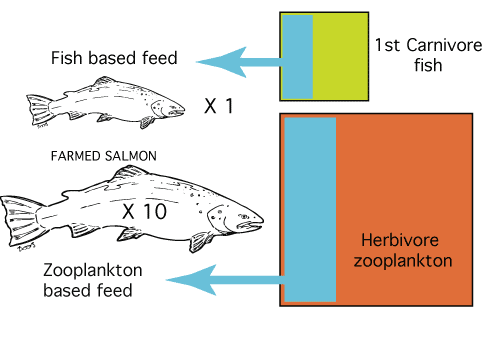

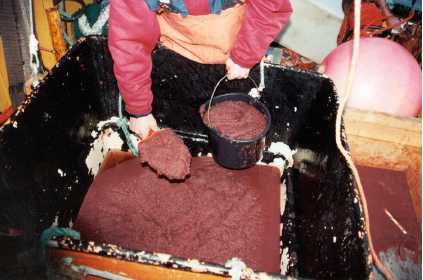
The following concepts of harvesting and cultivation are proposed:
All concepts involve harvesting or cultivation at low trophic levels, and Concepts 2 and 5 may readily be combined with strategic fertilization or utilization of other available nutrient sources, e.g. from agriculture or aquaculture. It is important to note that some methods are not feasible for all coastal regions. All methods are believed to be well suited for Norwegian waters, but it will for example not be feasible to harvest herbivore zooplankton from oligotrophic waters. Moreover, artificial upwelling systems can, with our current perception, most easily be created in a physical partly enclosed and deep fjord. The potential of mussel production and harvesting or cultivation of macroalgae is more widely distributed.
Some regions of the world’s oceans have large stocks of herbivore copepods and krill that are abundant and potentially exploitable, depending on their distribution in time and space (Figure 5). The fact that these zooplanktons are food for important fish stocks brings up a management and political dimension, and the potential interaction with fisheries must therefore have a main focus. It is important to note that 10% of the annual herbivore production will be comparable to the entire production of planktivore (1st carnivore) fish, and that 1% harvesting of this herbivore production is still a significant figure (see example in Figure 4). If the zooplankton production in the sea tends to be food limited, we may expect that moderate harvesting primarily will result in less mortality of zooplankton and not necessarily in reduced standing stocks and availability for planktivore fish. If, on the other hand, temperature or advective transport is more important than food limitation, harvesting will have greater impact. These questions are among the major challenges to explore.
The potential of harvesting zooplankton is considerable. It is in particular important to clarify the possibilities, constraints, and consequences of large-scale application of marine zooplankton for fish feed and industrial raw material. It will be important to learn from experience in the current krill fisheries.
The theoretical down `the food web' potential of culturing herbivore animals in the ocean is high, but there are obstacles that restrict exploitation of primary production in practical mariculture operations. In northern Europe, the blue mussel may represent an interesting species (Figure 6). Cultivation requires space in the coastal zone, and appropriate locations must be biologically rich and physically turbulent enough to support an economically feasible production. It is in particular interesting that if we employ appropriate technologies, we can utilize some of the nutrient resources that are residue from agriculture and intense aquaculture for mussel production. These resources, which are released into coastal waters, may be brought back into controlled biological cycling through mussel cultivation. Knowledge of the fate of anthropogenic nutrients and hygienic aspects in the coastal zone will most likely allow such applications, as demonstrated in a MARICULT project in the Larvikfjord.
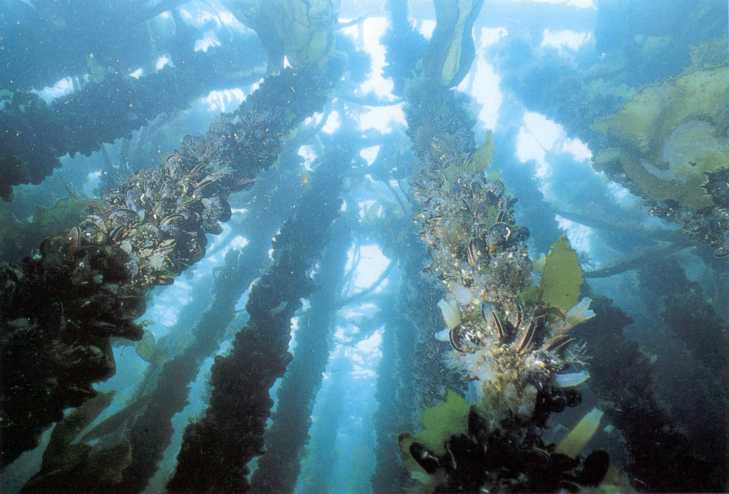
Mussels are attractive for direct consumption, but a major byproduct of small individuals must be exploited for other purposes. This bulk resource can be used for fish feed. The blue mussel is a species with growth potential high enough to become a feed resource for marine aquaculture. This will require production technologies that are still not invented. It is an attractive option to bring nutrient discharge from intensive aquaculture into blue mussel biomass and then back into fish feed. This will contribute to move the cultured fish species down the food web and secondly to enhance the production potential of cultured fish. The need for knowledge on energy and material cycling in fish farming, its interaction in the coastal ocean, knowledge on threats of disease spreading, and the need to improve production technology suggests that these options are not immediately available.
The large upwelling areas of the world's oceans are very productive. The fundamental physical and biological mechanisms that result in strong fertilization by deep water, short food webs, and accordingly high harvesting potential, have for long time been a challenge for science. It is important to note that these high productive areas are not recognized as environmental problems. It is a challenging question if smallscale highly productive upwelling systems can be created artificially in suitable locations. An ultimate question is how the nutrient regimes of these ecosystems, driven by their characteristic physical forcing, results in short and highly productive food webs.
MARICULT has supported an initiative to explore the option of improving productivity, primarily as a means of enhancing the potential to cultivate herbivore animals such as mussels, and reduce the problems of toxic algae during mussel cultivation. A submerged freshwater outlet generates the upwelling energy. Preliminary model and background studies have shown that artificial upwelling of nutrient rich deep water in fjords have a potential to increase the phytoplankton production by a factor of 3-4 after the spring bloom and probably also reduce the occurrence of toxic flagellates in the phytoplankton. The Samnangerfjord in western Norway has been identified as a suitable location for testing the effects of artificial upwelling on the biological productivity of macroalgae, mussels and animals of higher trophic levels. The further development of this method will still require research and development, and it is notable that many other deep Norwegian fjords, with available nutrient-rich deep water, will most likely be suitable for this treatment. Related methods, adapted to smaller geographic scale, may be developed and used to detoxify mussels more locally.
There is very little doubt that the productivity of marine waters becomes stimulated and controlled by nutrient supply from deepwater. MARICULT has provided experimental data that show in detail how the lower trophic levels of the pelagic food web respond and interact to enhanced nutrient supply. Data are derived from closed experimental ecosystems, but also from experimental activities in an open coastal ecosystem exposed to sustained nutrient addition through the season (Hopavågen, Central Norway). The pattern of responses in food web structure and function are comparable to those found in the southern North Sea, which is affected by anthropogenic nutrient supply [97].
It seems clear that the ability to control the responses of nutrients at species level is very limited for organisms at higher trophic levels. Many alternative food web pathways may become stimulated at trophic levels above herbivore zooplankton; such as primary carnivore fish, jellyfish, other invertebrate predators, or benthic animals. Production yields are therefore not adequately controlled at the species/population level, and it will generally not be feasible to fertilize marine systems to harvest carnivore species. On the other hand, in semi-closed locations, the production yields following nutrient additions may be highly predictable and efficient for macroalgae and for benthic animals that are primarily herbivore, like blue mussel. MARICULT projects have documented growth responses for blue mussels and scallops following the fertilization of an open coastal lagoon.
Marine macroalgae (seaweeds) represent a poorly exploited primary biomass, only their polysaccharides are systematically used for industrial purposes. Plant breeding has hardly been applied to these plants and there is a large potential for improvement. Space and access to water are very unlikely to ever limit the cultivation of marine macroalgae. These facts alone make seaweeds particularly interesting as a source of renewable raw materials. It is a main challenge to invent competitive technology for direct utilization of n-3 rich lipids and the conversion of biomass to, for example, fish feed, food ingredients, bulk chemicals, energy carriers and other useful commodities. Another interesting aspect is to use macroalgae for combined biomass production and bio-remediation measures for coastal waters.
Nutrients are natural elements that are essential for all living organisms and incorporated in all food web components. Because of their stimulating effect on phytoplankton and macroalgal growth, major ecological changes may take place if nutrients are supplied at too high rates. Some ecological changes following enhanced nutrient emission are undesirable and not esthetically accepted because they are associated with ecosystem degradation. The process of ecosystem enrichment by nutrients is generally denoted eutrophication. If the process of eutrophication ends up in ecosystem degradation, the process is termed harmful eutrophication. Issues related to coastal eutrophication have been the main focus of MARICULT projects. Some general conclusions are as follows:
MARICULT has provided considerable further insight into the responses of pelagic and benthic ecosystems that are exposed to enhanced nutrient supply. Both the structure and function of the plankton food web are altered by enhanced nutrient supply. There are some clear differences how the ecosystems reacts in European marginal seas (Baltic Sea, Mediterranean Sea) and in Atlantic waters, but there are also great similarities. The variability in food web fluxes is much closer related to nutrient loading rates than the variability in biomasses of plankton. However, the latter compartments related better to the total nutrient concentrations in the water.
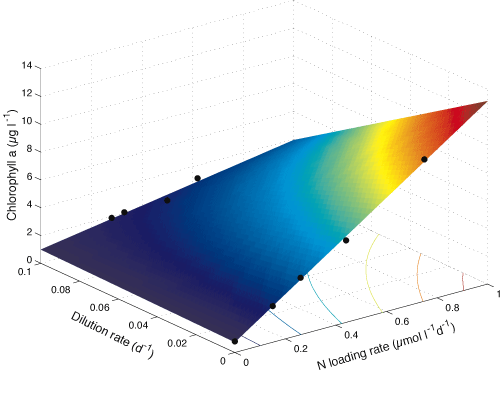
Although still at a preliminary stage, the Programme has contributed to a conceptual platform for assessment criteria of ecosystem state and water quality of pelagic coastal waters. Many indices show a common, regionally independent pattern of variation. Primary production, mesozooplankton grazing and growth, fraction of primary production consumed by grazers, and bacterial production relative to primary production, as well as more integrated measures like cycling indices and path lengths, are all well related to the nutrient loading rate. Autotrophic biomass, the ratio of autotrophic to heterotrophic biomass, and the fraction of picocyanobacteria of the total autotrophic biomass are all well related to the total nutrient concentration. These relationships, or other integrated variables based on these, are potential candidates of response functions for nutrient management models for European coastal waters.
The analysis of elemental flow networks of the lower food web suggested an upper critical nutrient loading rate for the maintenance of the integrity of the food web. This means that energy and material transport in the lower food web will not function adequately for loading rates above this critical level. This level must be interpreted as the carrying capacity of coastal waters to accept nutrient loading without co-occurring negative ecological effects. The above biological criteria are therefore fundamental for future site evaluations for aquaculture in coastal waters.
The general response of the phytoplankton and the preliminary framework of a dose-response model for nutrients in the coastal zone are illustrated in Figure 7. The nutrient dose stimulated phytoplankton growth whereas the water dilution rate, which is inversely related to the water retention time, is a major modifying factor for the actual ecological effects of the nutrients.
All kinds of food production require a clean and unpolluted environment, and pollution of coastal waters by persistent toxins is a potential threat against mariculture as well as the fisheries. Heavy metals and organic toxins have been steadily phased down in western countries during the last decades, but organic toxins are still a potential problem. We have a long tradition in using the ocean as deposit for wastes, but we cannot afford to continue that practice. The mechanisms of uptake, transport and cycling of toxins in the lower marine food web are not well known, but lipid soluble components will become concentrated up the food web. This calls for attention, because harvesting and cultivation involve first and higher carnivores that may be potentially sensitive to such toxins.
Marine pollution has not been specifically treated in MARICULT. The issue is undoubtedly very important for the fishing and mariculture industries, among other things because of greater public concern about food quality and improved sensitivity and lower detection limits of analytical methods for many substances, e.g. dioxin. It is therefore paramount that the seafood industries phase down their own pollution and that they take major initiatives to reduce toxin emissions from other sources as well.
Coastal eutrophication is a well known environmental problem affecting coastal ecosystems and our quality of life, but nutrients are natural components in the biosphere and are not threatening for human health. The countermeasures against harmful eutrophication are, however, very expensive for society, and it is therefore important to find a sound balance between the use and protection of coastal ecosystems.
The common western principles of nutrient management are hardly sustainable, because we isolate and remove a considerable part of nutrient wastes from the biological cycle instead of putting them back into biological cycling. The principle of reduction at source is in many cases inadequate, because a considerable fraction of the nutrient emission is from diffuse sources that cannot be efficiently reduced. The counter-measure strategy that is still not explored and implemented is to reduce the ecological effects in the coastal zone by using the nutrient resources for controlled mariculture where such nutrient sources are available.
Blue mussel cultivation is an efficient means of retaining anthropogenic nutrients in the coastal zone. The species is very efficient to clear phytoplankton from the water and the food is rapidly converted to mussel biomass. This process of nutrient retention in mussel biomass obviously reduces the nutrient concentrations in the water, and it is important that this is a vital method in situations where no other water purification technologies are available. An example of the particle retention efficiency of mussels is demonstrated in the shallow Öresund Strait between Denmark and Sweden where the massive banks of blue mussels remove practically all the phytoplankton from the water drained from the Baltic Sea. The story may also be turned around; short production time and high mussel meat quality is important for the economic feasibility in mussel farming, and both are supported by high rate of food supply to the mussels. It may in fact be the case that pristine coastal waters in our part of the world may be too nutrient deficient for feasible commercial production of blue mussel.
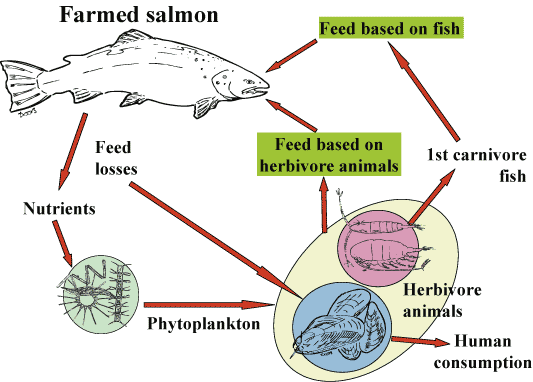
The attractive point of combining mussel production and water purification is that nutrient resources that are out of our control are utilized for food production instead of creating environmental problems and costs for society. This also represents a more sustainable way of nutrient utilization as it contributes to the closing of biological nutrient cycles. The use of anthropogenic nutrients and runoff for blue mussel cultivation has been demonstrated experimentally in the Programme. Additionally, the Limfjord in Denmark and the coastal zone of the Netherlands are both examples where eutrophication has created excellent conditions for mussel production.
Another example may illustrate a great potential. The amounts of nutrients that are released from Norwegian salmon cages represent, if converted to blue mussel biomass, an annu al production of >2 million tonnes. Not all, but a significant part of these nutrients can be retained by controlled mussel production. A schematic view of the biological cycle of farmed salmon is illustrated in Figure 8. Blue mussel - salmon forms a polyculture system. Grown together the blue mussel may take advantage of the discarges from the salmon farms.
A more holistic ecological view of management and resource exploitation, where we recognize that we are also components of the ecosystem, is well accepted in eastern Asian countries, but seem to be forgotten in the West. It is important to have a holistic perspective, and it may in turn contribute to more concern about the marine environment. Most people will understand the need to avoid pollution of land areas used for agriculture. The same kind of concern, which is presently not there, is also needed for the marine environment.
It is a challenge to coordinate fundamental research efforts on national and international levels without active and competent user involvement and such users are rare. Norsk Hydro has been the driving force of MARICULT, as a potential user with long-term perspectives on the issues treated, and the research councils and academic institutions have also contributed. Private funding for strategic fundamental research on the marine ecosystem, in cooperation with public funding agencies, is not common in an international context, and this makes the MARICULT Research Programme quite special. The lesson learned should be considered by research policy makers, because it is a great challenge to involve industry even in fundamental and environmental and environmental aspects. The uncommon alliance of marine scientists and industry in the field of marine ecology has been powerful, but initially misunderstood by for example environmental organizations.
MARICULT has contributed to both scientific and political agendas, and important contributions have been:
The understanding of interactions between environmental and production perspectives must be established on an international level. MARICULT projects have, through the channel of the European Commission projects, taken part in the Steering Committee of the ELOISE Programme (European Land-Ocean Interaction Studies), which is the European branch of the international LOICZ Programme.
Fundamental research on coastal eutrophication has been the main focus area of MARICULT, and the results are highly relevant for:
It is with minor efforts possible to establish the modelling tools needed to manage nutrient emission in the coastal zone on a scientific basis, and not only based on the principle of a precautionary approach. This is a major step ahead. These methods are the tool needed to quantify the carrying capacity of coastal waters with respect to fish cultivation.
MARICULT has pointed to blue mussel culture as a means of utilizing nutrient wastes from human origin or from intensive aquaculture for mariculture production. These nutrient resources are regarded as potential environmental problems today. Blue mussel feeds marine algae, representing a `marine cow', and the production potential is therefore very high. Mussel culture has because of many concurring events become prioritized all over Europe during the last few years.
It is also important to emphazise that appropriate co-location of fish cages and blue mussels may contribute to increase the carrying capacity of a location for cage aquaculture. Strategic location of mussel farms in between fish cages will most likely contribute to reduce risk of disease spreading rather than the opposite, and mussels may take advantage of the wastes generated from the cage cultures. Mussels may remove and retain bacteria from the water. These issues should be further explored, because it will reduce the requirements of aquaculture for space in the coastal zone.
The user value for management is immediately relevant also for industry (see above). MARICULT has additionally provided results that are important for industry in a longterm perspective, but it may be important to identify the ways ahead already now. One example is the availability of marine-based feed for the salmon industry. There are few other options to achieve a steady increasing salmon production based on marine feed than moving the cultured salmon one step down the food web, i.e. to prepare its feed based on herbivore or marine plant biomass (see Figure 4 above).
A precautionary approach is a very important principle for sustainable development, but knowledge is needed to find the balance between sustainable use and protection of the coastal zone. Proper tools to manage nutrient emission in the coastal zone on a scientific basis will also allow the assessment of the carrying capacity of coastal locations and the feasibility of those locations for aquaculture. Steady and predictable conditions for establishment and production are paramount for the industry.
MARICULT has established a conceptual basis for increase of marine harvesting and mariculture, and a number ways to proceed has been suggested. This does not mean that the suggested concepts are the only way ahead. New legislation for sea ranching is now implemented in Norway, and this is but one aspect that should be further evaluated in light of the conceptual basis established by MARICULT. The importance of considering the identified constraints of trophic level and fertilization measures is also very relevant for sea ranching.
 |  |  | 15.3 Environmental constraints and sustainability |